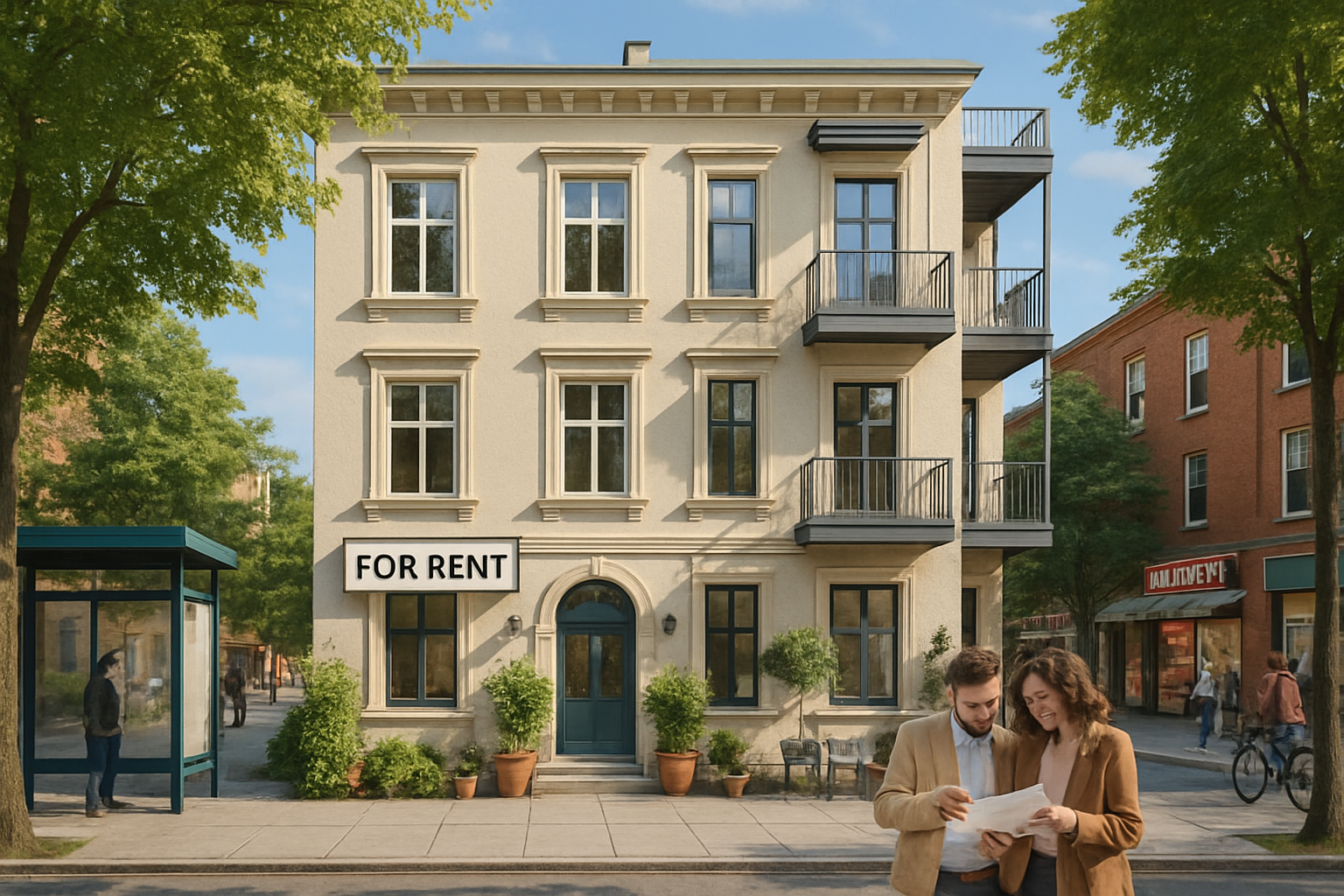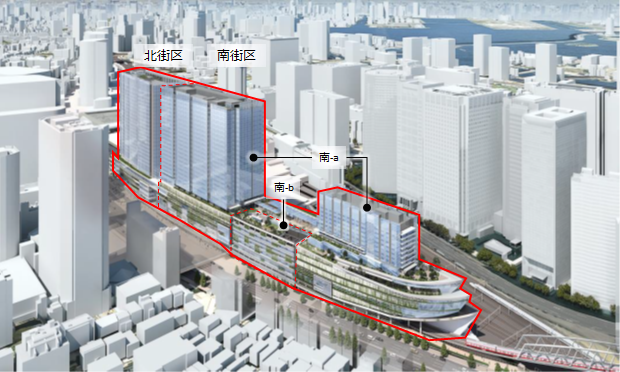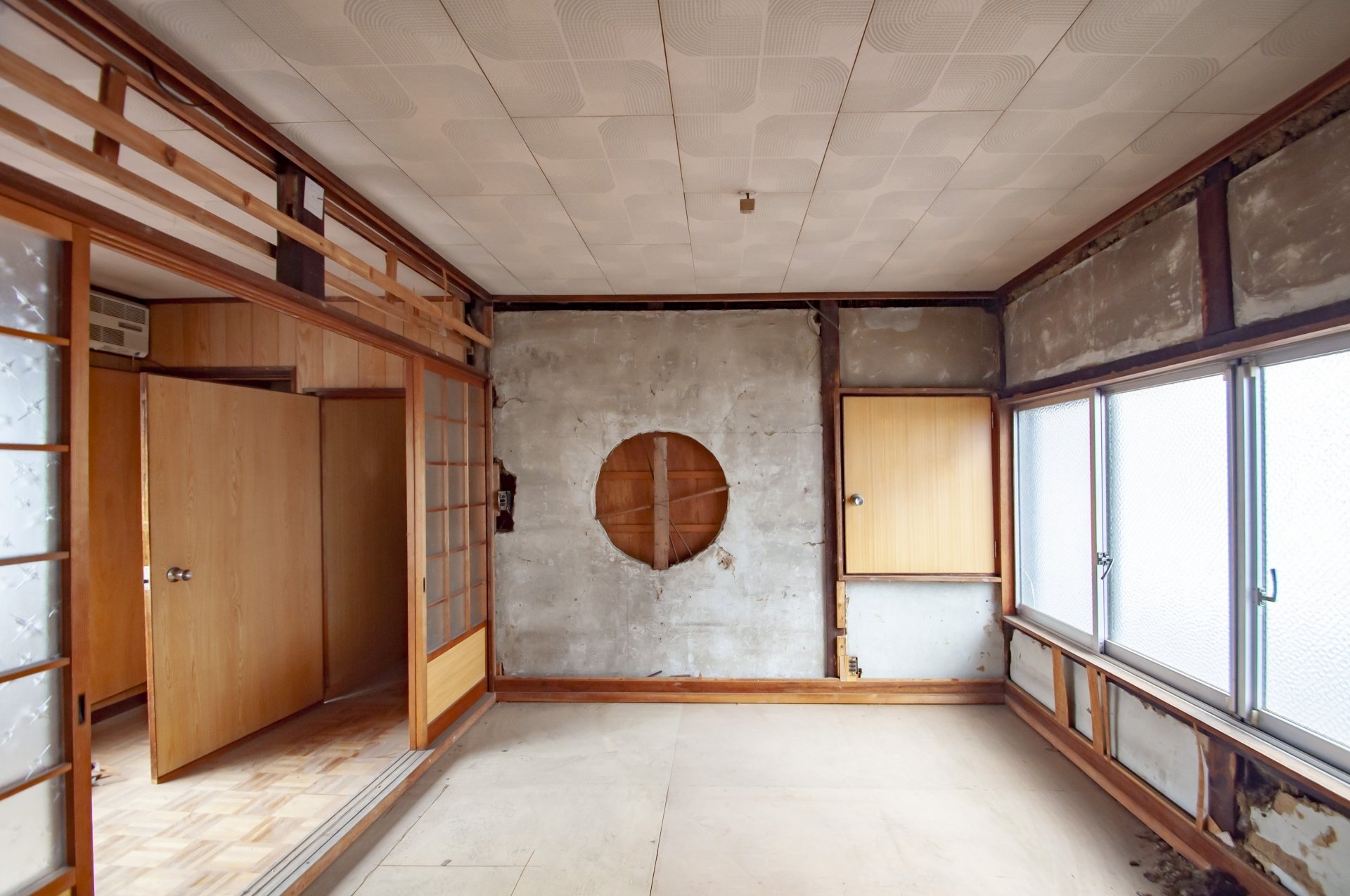In recent years, the problem of vacant houses has become increasingly serious throughout Japan. According to the 2023 Housing and Land Survey by the Ministry of Internal Affairs and Communications, the total number of vacant houses in Japan as of 2023 reached 9 million, and the vacancy rate reached a record high of 13.8%. This is an increase of 510,000 units from the 8.49 million units in 2018, and this trend is expected to continue.
While the increase in vacant homes is a social issue, it also represents an opportunity for investors. Especially in rural and suburban areas, there is the possibility of acquiring properties at low cost, and renovations can be expected to increase asset value and generate income.
This article explains the possibilities and challenges of investing in vacant houses and renovations, based on specific data and case studies. We provide useful information for those who are looking for new options for real estate investment and for those who are considering how to utilize inherited vacant houses.
Japan's vacant house problem and its potential as an investment market
Current Situation and Statistics on Vacant Houses
The problem of vacant houses in Japan is becoming more serious every year. According to the latest data from the Ministry of Internal Affairs and Communications, the total number of vacant houses as of 2023 is 9 million, and the vacancy rate has reached 13.8%. 510,000 houses have increased from 8.49 million in 2018, and this trend is expected to continue.
The main causes of the increase in vacant homes are a combination of population decline, aging population, inheritance issues, and an oversupply of housing. The increase in vacant houses is particularly noticeable in rural areas due to the outflow of population.
| Classification | Number of vacant houses | Vacant house rate |
|---|---|---|
| Nationwide (2023) | Approx. 9 million units | 13.8 |
| Nationwide (2018) | Approx. 8.49 million units | 13.6 |
| Three major metropolitan areas | Approx. 3.63 million units | 12.0 |
| Regional areas | Approx. 4.86 million units | 15.1 |
Vacant houses are classified according to their use and condition as follows
- Secondary residences: residences used occasionally, such as vacation homes
- For-rent housing: Housing that is intended for rental but not yet occupied
- Residences for sale: Homes intended for sale but not yet sold
- Other housing: Housing other than the above, such as unutilized inheritance, dilapidated, etc.
The "other housing" category is particularly noteworthy as an investment target. This category includes many vacant houses that have been inherited or abandoned, and their value could be greatly increased through appropriate renovations.
The Act on Special Measures against Vacant Houses and the Legal Framework
The Act on Special Measures Concerning Unoccupied Houses (official name: Act on Special Measures Concerning Promotion of Measures to Cope with Empty Houses), which went into full effect in 2015, was enacted to address the growing problem of vacant houses. The law clarifies that owners are responsible for the proper management of vacant houses and grants local governments the authority to conduct on-site inspections of specific vacant houses, provide guidance, and issue orders.
In December 2023, the Act was amended to define a new classification of "unmanaged vacant houses, etc.". As a result, the criteria for designation as a "specified vacant house, etc." have been tightened, and regulations on vacant houses that are not properly managed have been strengthened. Of particular importance is the fact that if a property is designated as a "controlled defective vacant house, etc.," the special exception for residential use will no longer apply, and property taxes may increase up to six times.
This law has the effect of encouraging owners of vacant houses to either manage them properly or sell and utilize them, which also affects the real estate investment market. For investors, the number of owners considering selling their properties may increase, thereby expanding opportunities for property acquisition.
Vacant House Bank System and its Utilization
The vacant house bank system is a system whereby local governments aggregate information on vacant houses within their jurisdictions and match them with prospective users. More than 1,000 municipalities nationwide operate this system, which aims to solve the problem of vacant houses in the community and promote immigration.
For investors, the vacant house bank is a valuable source of information on properties that are not readily available on the market. In particular, properties in rural areas are less likely to appear on the general real estate market, so you will be able to find unique investment opportunities through the vacant house bank.
The following are some of the key points to consider when utilizing a vacant house bank:
| Steps for Utilization | Contents | Points to note |
|---|---|---|
| Gather information | Check the vacant house banks of several municipalities. | Check the frequency of updates and the level of detail of information |
| Property survey | Visit the property and check the surrounding environment | Check in detail the age of the property and areas in need of repair. |
| Confirm local government support | Investigate subsidies and support systems | Understand the conditions and timing of application in advance |
| Negotiate with the owner | Negotiate directly or through local government | Be aware of building relationships with the local community |
Attractiveness of investing in vacant houses and how to put it into practice
Advantages and disadvantages of investing in vacant houses
Vacant house investment is a method of real estate investment in which vacant houses are purchased at a lower price than the market price, renovated and properly managed to increase the asset value, and rental income or profit from the sale is earned.
There are advantages and disadvantages of investing in vacant houses as follows:
| Advantages | Disadvantages |
|---|---|
| Initial investment cost is low. | Renovation costs can be high |
| High yields can be expected. | Limited demand depending on location |
| Tax-saving effect can be obtained | Risks due to building deterioration |
| Possibility of acquiring properties with high scarcity | Fire insurance premiums tend to be high |
| Some markets have little competition | Possibility of limited exit strategies |
Particularly with regard to tax-saving effects, it is possible to save on "income and inhabitant taxes," "gift taxes," and "inheritance taxes" through real estate investment. Taxation on rental income can be reduced through depreciation and repair expenses that can be recorded as expenses.
Selection Criteria and Profitability Analysis of Vacant Houses
The following are the key points for selecting a vacant house with high profitability:
- Location: distance from train stations, access to convenient facilities, and surrounding environment such as school districts
- Condition of the property: not only the age of the property, but also the state of maintenance and the soundness of the foundation and structural parts
- Renovation cost: scope of work required and cost effectiveness
- Demand forecast: vacancy rate, demographics, and future development potential of the area
- Regulations: building codes, city planning laws, and other regulations, road access conditions, etc.
The following indicators should be used for profitability analysis:
| Indicators | Calculation Method | Approximate value |
|---|---|---|
| Surface Yield | Annual rental income ÷ Total investment × 100 | Ideally, 8% or more |
| Real Yield | (Annual rental income - Expenses) ÷ Total investment ×100 | 5% or more is ideal |
| Capital payback period | Total Investment / Annual Cash Flow | 15 years or less is the standard |
| ROI | (Sale Price - Purchase Price)/Purchase Price x 100 | Depends on property characteristics |
Renovation Investment Strategies and Results
Types of Renovation and Cost Rates
Renovation investment is an investment technique to create new value by substantially changing the structure and layout of an existing building. Unlike mere repair (renovation), it is characterized by fundamentally increasing the value of the property by changing the floor plan, changing the use of the property, and improving the design.
The types of renovation and cost rates are as follows:
| Scope of renovation | Cost (detached house) | Cost (condominiums) | Contents |
|---|---|---|---|
| Minimal renovation | 3-5 million yen | 2 to 4 million yen | Partial updating of interior and water areas |
| General renovation | 5-15 million yen | 4-10 million yen | Change of floor plan, updating of facilities |
| Full renovation | 15-25 million yen | 8-15 million yen | Full renovation, high-grade facilities |
| Skeleton renovation | 20-30 million yen | 10-20 million yen | Renovation of everything except the structure |
Renovation yield " is an indicator to measure the cost-effectiveness of renovation. This is a figure obtained by dividing the increase in rent due to renovation by the construction cost, and in general, the ideal goal is to achieve 10-12% or more.
For example, if a 5 million yen renovation results in a 50,000 yen increase in monthly rent:
Annual rent increase of 600,000 yen ÷ 5 million yen × 100 = Renovation yield of 12
Calculation of Investment Effectiveness and Yield
To maximize the effect of renovation investment, it is important to renovate strategically according to the investment area and property type. Below are the key points to increase investment effectiveness:
- Clarify targets: Clarify the tenant and buyer demographics and design to meet their needs.
- Maximize cost performance: Allocate the budget and focus investment on areas that are important to tenants.
- Create differentiating factors: Create points of differentiation from surrounding properties to increase competitiveness
- Understand area characteristics: Understand local characteristics and demand trends, and select appropriate facilities and floor plans
- Adopt a long-term perspective: Be aware of long-term market value, not just temporary trends
Particularly effective renovation elements include
- Integration of open kitchen and living space
- Investing in high-performance water fixtures
- Energy savings through improved insulation and air sealing
- Creation of teleworking space
- Improving storage space efficiency
Issues and Measures for Investment in Vacant Houses and Renovations
Legal Regulations and Rights Relationships
When investing in a vacant house, the following laws and regulations and rights relationships need to be taken into account:
-
Building Standard Law: Renovation work must comply with current building standards. In many cases, it is required to meet current standards, especially with regard to seismic performance and fire resistance.
-
City Planning Law: Building restrictions and development regulations apply according to zoning. For example, in residential zones, change of use to retail may be restricted.
-
Fire Defense Law: Fire prevention equipment and evacuation routes are regulated, and particularly strict standards apply when converting to lodging facilities or stores.
-
Vacant Houses Special Measures Law: Note that the special exception for residential property tax will no longer apply if the property is designated as a "vacant house with defective management, etc." due to the December 2023 amendment.
-
Inheritance relations: If ownership is divided among multiple heirs, it is necessary to obtain the agreement of all heirs. To avoid getting into inheritance trouble, the rights relationship should be thoroughly checked.
It is recommended that you consult a specialist (lawyer, judicial scrivener, architect, etc.) regarding these regulations and rights.
Financing and Capital Procurement
The following methods are available for financing vacant house/renovation investments:
| Procurement Method | Characteristics | When suitable |
|---|---|---|
| Self-financing | No interest cost, highly flexible | If you have sufficient savings |
| Mortgage loan | Low interest rate, long-term repayment possible | For residential purposes as well |
| Real Estate Investment Loan | Specialized in investment properties | For pure investment purposes |
| Renovation Loan | Specializing in renovation costs | If you already own property |
| Loan specialized for vacant houses | Loans specialized in the utilization of vacant houses | Available at regional financial institutions |
It is important to keep the following points in mind when obtaining a loan:
- Prepare a large percentage of your own funds, as the collateral value of the property is often assessed as low.
- Prepare a detailed business plan and clearly demonstrate profitability.
- Consult with multiple financial institutions and compare the best terms and conditions.
- Research regional financial institutions and special loan programs offered by local governments.
Risk Management
The following are potential risks and countermeasures for investing in vacant houses and renovations:
| Risks | Description | Countermeasures |
|---|---|---|
| Structural problems | Aging, termite damage, etc. | Preliminary professional investigation and appropriate reinforcement |
| Lack of tenants | Prolonged vacancy due to low local demand | Thorough market research and differentiation strategy |
| cash management | Unexpected repair expenses | Secure adequate funding plan and reserve funds |
| Regulatory changes | Restrictions due to building code revisions, etc. | Gathering the latest regulatory information |
| Disaster risk | Damage from earthquake, flood, etc. | Appropriate insurance coverage and earthquake/disaster prevention measures |
Of particular importance is to consider exit strategies in advance. The main options are as follows
- Rental income from long-term holdings: Continue to manage the property as a stable source of income
- Selling at a profit: Sell at a time when the property value has increased.
- Use as an inheritance measure: Use as a means of passing on assets to the next generation
- Build a new profit model through conversion: Improve profitability by changing the use of the property
Utilization of subsidies and grants
The following are major subsidies and grants that can be utilized for the utilization and renovation of vacant houses:
| Subsidy name | Implementing Entity | Description of subsidy | Conditions |
|---|---|---|---|
| Vacant House Revitalization Promotion Project | Ministry of Land, Infrastructure, Transport and Tourism | Part of renovation costs (up to 1/3) | Projects that contribute to community revitalization |
| Comprehensive support project for vacant houses | Ministry of Land, Infrastructure, Transport and Tourism | Utilization and removal costs of vacant houses | Requires formulation of a plan to deal with vacant houses, etc. |
| Housing and building earthquake retrofitting projects | Ministry of Land, Infrastructure, Transport and Tourism | Part of the cost of seismic diagnosis and retrofitting | Must meet earthquake resistance standards |
| Subsidies provided by each municipality | Each municipality | Part of renovation and demolition costs | Varies from municipality to municipality |
The points to consider when utilizing subsidies and grants are as follows
- Check the application period and conditions in advance
- Complete the application before construction begins
- Investigate the possibility of using multiple subsidies together
- Consult with local real estate experts and government offices.
In terms of taxation, there are a number of systems such as the 30 million yen special deduction for income from the transfer of a vacant house (when selling an inherited vacant house) and the 1 million yen special deduction for long-term transfer income when transferring low-utilized land, etc. Since the requirements for these systems are strict, it is recommended to consult a tax accountant or other specialist.
Conclusion
The problem of vacant houses in Japan is expected to become even more serious in the future, and it is predicted that the percentage of vacant houses will reach 18.3% by 2033. While this situation is a social problem, it also presents new opportunities for investors.
Main points of investment in vacant houses and renovation:
- Low initial investment and high yields can be expected.
- Legal reforms have promoted proper management of vacant houses and increased market transparency.
- Efficient investment is possible by utilizing vacant house banks and various subsidy programs
- Property selection and renovation strategies are the keys to success
- Prior consideration of risk management and exit strategies is essential
Increasing interest in the SDGs and reforms in work styles are expected to lead to an increase in rural migration and dual-location lifestyles in the future. These social changes will be factors that increase the demand for properly renovated vacant houses.
In addition, legal revisions in 2023 will further clarify the responsibility for managing vacant houses, increasing the likelihood that properties whose owners are unable to properly manage them will come onto the market. Information gathering and market analysis will become increasingly important for investors.
Investment in vacant and renovated houses is an investment method of social significance that not only secures income but also contributes to regional revitalization and improvement of the living environment. By taking a long-term perspective and understanding the characteristics of the local community, sustainable investment results can be achieved.
If you are considering investing in vacant houses or renovations, we recommend that you consult with an expert and tour actual properties to develop a strategy that fits your financial capacity and objectives.
Frequently Asked Questions
Q1: What are the most important factors for success in investing in vacant properties?
A: The most important factors in investing in vacant properties are location selection and the structural soundness of the property. No matter how inexpensive the property may be, it is difficult to generate income if it is located in an area where there is no demand or if the property has structural problems. It is also important to estimate the balance between renovation costs and expected income in detail in advance; in INA&Associates' experience, properties within a 15-minute walk from a station and with good access to convenient amenities have shown particularly high success rates.
Q2: Are there any tips for improving the cost-effectiveness of renovation work?
A: The key to improving the cost-effectiveness of renovation work is to "clarify the target group" and "allocate a well-defined budget. For example, it is effective to focus the budget on areas directly related to occupant satisfaction, such as the water supply and insulation, and to keep the interior design simple and versatile. It is also important to obtain estimates from multiple contractors and compare the construction details and prices.
Q3: What should I keep in mind when using the Vacant House Bank?
A: When using the Vacant House Bank, it is important to pay attention to the "freshness of information" and "checking the condition of the property. In some cases, the information is out of date, or detailed property information (especially defects) is lacking. We recommend that you always conduct a site survey and, if possible, have a construction specialist accompany you. It is also important to confirm the details of the vacant house bank in advance, as each municipality has different methods of operation and support systems for vacant house banks.
Q4: How has the investment environment changed with the revision of the Act on Special Measures concerning Vacant Houses?
A: The 2023 amendment to the Act on Special Measures against Vacant Houses established a new classification of "unmanaged vacant houses, etc." and tightened the criteria for designation as "specified vacant houses, etc.". As a result of this amendment, owners are increasingly being pressured to either manage their properties properly or sell/utilize them. Investors need to be aware that while the number of vacant houses on the market may increase, their management responsibilities after purchase have also been strengthened. Investments without a proper management plan may represent a future risk.
Q5: What is the best way to finance an investment in a vacant property?
A: The best way to raise capital for an investment in a vacant property depends on the size and purpose of the investment. For small investments, self-financing is ideal, but for larger investments, a loan dedicated to vacant houses or a real estate investment loan can be effective. In addition, some municipalities have low-interest loan programs specifically designed for the utilization of vacant houses. The important thing is to fully consider the balance between the profitability of the property and the repayment plan, and to procure financing in a reasonable manner.
Reference Information
- Ministry of Internal Affairs and Communications, "2023 Housing and Land Survey" (2023)
- Ministry of Land, Infrastructure, Transport and Tourism, "Act on Special Measures Concerning Promotion of Measures to Cope with Unoccupied Housing, etc.
- Ministry of Land, Infrastructure, Transport and Tourism, "Outline of the One Million Yen Deduction for Long-Term Transfer Income to Promote the Utilization of Low-Use Land" (Japanese only)
- National Association for the Promotion of Vacant House Distribution "Practical Guide to the Revitalization of Vacant Houses" (In Japanese Only)
If you are considering investing in vacant houses or renovations, INA&Associates also offers individual consultations. We will provide consistent support from property selection to renovation planning and financing, so please feel free to contact us.

Daisuke Inazawa
Representative Director of INA&Associates Inc. Based in Osaka, Tokyo, and Kanagawa, he is engaged in real estate sales, leasing, and management. He provides services based on his extensive experience in the real estate industry. Based on the philosophy that “human resources are a company's most important asset,” he places great importance on human resource development. He continues to take on the challenge of creating sustainable corporate value.

.png)













